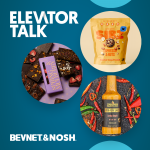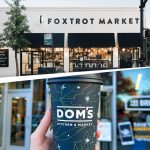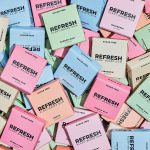Fishpeople CEO Talks $12M Raise, Seafood’s ‘First Generation Transformation’

Asking the average consumer how their fish gets into stores likely results in blank stares– and that’s only one of the issues facing the seafood industry. Many seafood companies are working to revamp the category’s product offerings to better reel in consumers. But Fishpeople CEO Ken Plasse said he thinks his seafood-focused CPG brand and supplier may be able to provide some extra bait with the company’s Tuesday announcement of a $12M round of funding.
The lead investor in the series B round was Advantage Capital Agribusiness Partners (ACAP) with S2G Ventures, Encourage Capital, and Blueberry Ventures, along with previous investor 3×5 Partners. The capital is expected will go toward helping the company scale distribution of the existing product lines, investing in product innovation, building brand awareness and incorporating new fish species.
The company held several other rolling raises, according to Plasse, but with this round, he said the company sought out investors who could add industry knowledge around scaling CPG brands, building supply chains and working with agricultural products.
“If you look at what we’re trying to do at Fishpeople– building a consumer first, vertically integrated, transparent seafood company– it’s really different than the supply base of most typical seafood companies. And that requires good capital partners,” Plasse said. “This group of investors really solidly believes in disrupting from the agricultural base forward.”
Fishpeople first cast into the food world with shelf stable soups, which Plasse said helped the company build a robust supply chain. That line is now in over 6,000 stores and is one of the leading seafood soup brands. The company then expanded into a line of individual, pre-portioned fish fillets for Walmart. Most recently, the brand began supplying fish to meal kit companies, corporate campuses, chefs and other West Coast-based food service operations. Simultaneously, Fishpeople launched a frozen seafood kit into retail that contains two portions of fish, a garnish, a sauce and a cooking tray.
The kits allow traditional grocery retailers to have a “meal kit-esque” option without worrying about spoilage. More importantly, Plasse said the kits allow Fishpeople to remove some of the barriers consumers see in purchasing fish.
“There’s really three fears people have about seafood. One, they just don’t trust where it came from, what’s been added, the source — just knowing if you are really eating truly healthy, sustainable seafood,” Plasse told NOSH. “The other is that it’s difficult to prepare and then it’s pretty challenging to clean.”
Still, frozen fish may be seen as counter to the consumer movement toward “fresh” products in the perimeter of the store. Plasse said that’s why Fishpeople strategically merchandises its seafood kits in seafood department freezers rather than in the freezer aisle. He added that while consumers may not know it, when it comes to “fresh,” frozen often tastes fresher. A properly flash frozen fish maintains all of its flavor and micronutrients, rather than sitting in transport for days.
But Plasse doesn’t fault consumers for being hesitant in regards to the seafood. He acknowledged that the industry as a whole hasn’t always been the most transparent. Recent reports of fraudulent fish have eroded consumer trust. Additionally, the consumers have been less drawn to the category because it’s been somewhat neglected in terms of innovative new products that make eating fresh fish easy.
Only recently has seafood seen a revolution in its product offerings and the investment dollars to help up-and-coming seafood companies grow. Among the category as a whole, Plasse said, frozen seafood is the fastest growing segment, and he thinks Fishpeople will be a leader in this next wave of products.
“In many ways we feel it’s our mission to help consumers and try to move the needle,” Plasse said. “I really consider seafood to be the last frontier in food to have the disruption that a lot of other categories have already had. You’re seeing the third or fourth go of ‘next generation’ beverages; [and] in snacks, maybe the seventh or eighth generation. In seafood, we’re all still working on that first generation transformation.”













